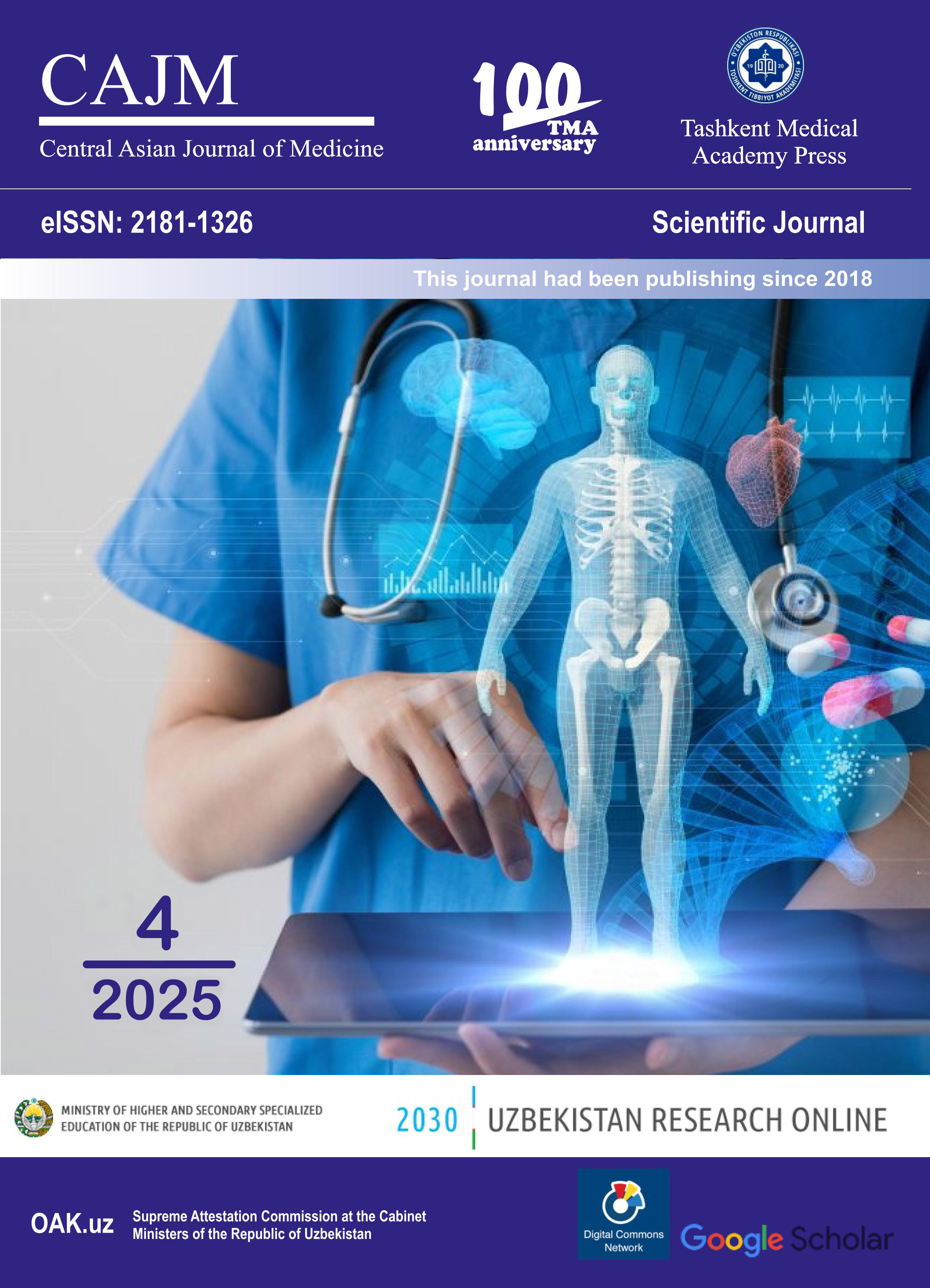OUR EXPERIENCE WITH SURGICAL TREATMENT OF ROTATOR CUFF INJURIES OF THE SHOULDER JOINT
Keywords:
shoulder joint, rotator cuff, injury, treatment.Abstract
CSJ injuries occur in 63-84% of shoulder injuries. The rotator cuff ranks third (16%) after spinal (23%) and knee (19%) disorders in terms of frequency of rotator cuff injuries. The frequency of tears varies from 5 to 37% (A. DePalma), of which about 15-20% in 60-year-olds, 26-30% in 70-year-olds, and 36-80% in 80-year-olds. Such a high incidence of pathology is predetermined by regular degenerative changes in the tendinous and muscular tissues of the rotator cuff of the shoulder, which develop in people with age and are caused by anatomical features of the shoulder joint structure. In the tendon part of the rotator cuff of the shoulder there is a so-called ‘load cable’ or ‘sickle-shaped area’, within which blood flow is reduced, and there the tear formation occurs. Magnetic resonance imaging (MRI) is highly informative in the diagnosis of pathological changes of the rotator cuff of the shoulder. T2-VI with signal suppression from fatty tissue in the oblique coronal projection is considered to be the most informative.
References
Bassett RW, Cofield RH. Acute tears of the rotator cuff: the timing of surgical repairs. Clin Orthop. 1983; 175:18-24.
Codman EA. Complete rupture of the supraspinatus tendon: operative treatment with report of two successful cases. Boston Med Surg J. 1911; 164:708-10.
Constant CR, Murley AH. A clinical method of functional assessment of the shoulder. Clin Orthop. 1987; 214:160-4.
DE Palma AF, Caller G, Bennett GA. Variational anatomy and degenerative lesions of the shoulder joint. Instr Course Lect. 1994; 6:255-81.
Keyes EL. Anatomic observations on senile changes in the shoulder. J Bone Joint Surg Am. 1935; 17:953-60.
Lohr JF, Uhthoff HK. The micro vascular pattern of the supraspinatus tendon. Clin Orthop. 1990; 254:35-8.
Murray FT, Lajtai G, Mileski MR, Snyder JS. Arthroscopic repair of medium to large full-thickness rotator cuff tears: outcome at 2- to 6-year follow up. J Shoulder Elbow Surg. 2002; 11:19-24.
Neer CS. Anterior acromioplasty for the chronic impingement syndrome: a preliminary report. J Bone Joint Surg Am. 1972; 54:41-50.
Nelson CO, Sileo MJ, Grossman MG, Serra-Hsu F. Single-row modified Mason-Allen versus double-row arthroscopic rotator cuff repair: a biomechanical and surface area comparison. Arthroscopy. 2008; 24:941-8.
Neer CS. Displaced proximal humeral fractures: part I. Classification and Evaluation. J Bone Joint Surg Am. 1970; 52:1077-89.
Transfer of latissimus dorsi for irreparable rotator-cuff tears / M. Aoki, K. Okamura, S. Fukushima et al. J. Bone Joint Surg. 1996; 78-B(5): 761-766.
Visotsky JI, et al. Cuff tear arthropathy: pathogenesis, classification and algorithm for treatment. J Bone Joint Surg Am. 2004; 86:35-40.
Warner, J. P. Management of massive irreparable rotator cuff tears: the role of tendon transfer instructional course lecture / Warner J. P. J. Bone Joint Surg. 2000; 82-A(6): 878-890.
Watson, M. Practical shoulder surgery / M. Watson. By Grune & Stratton, LTD. 1985. 261.

